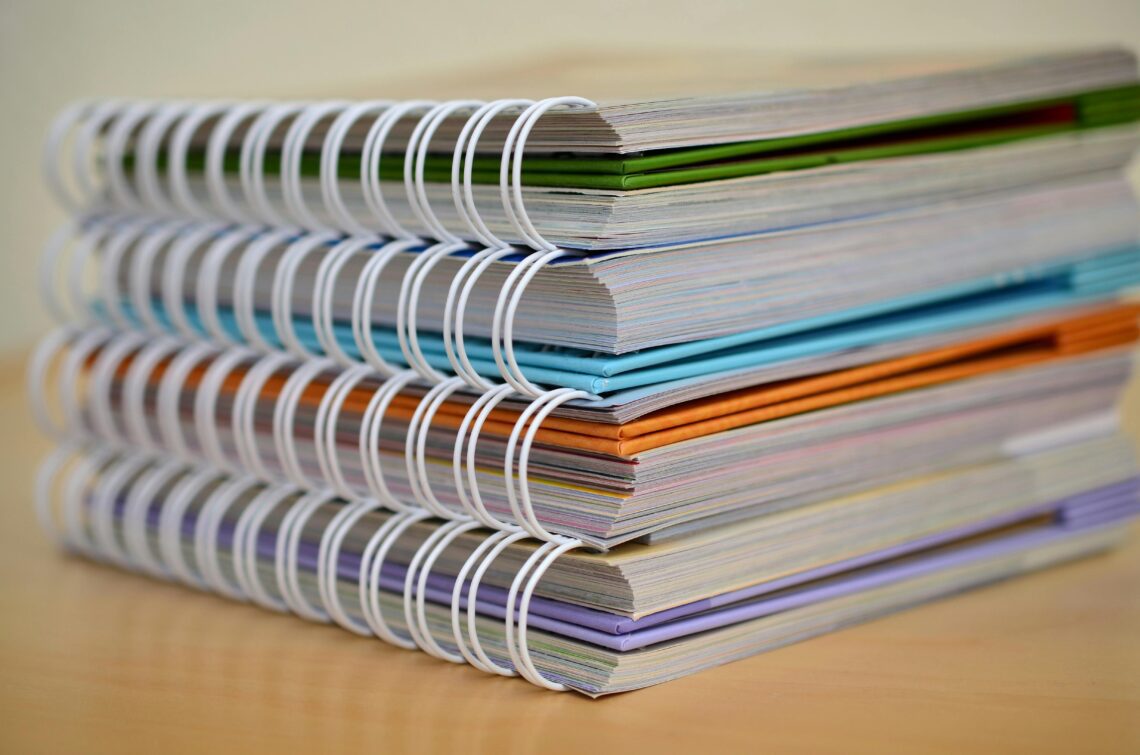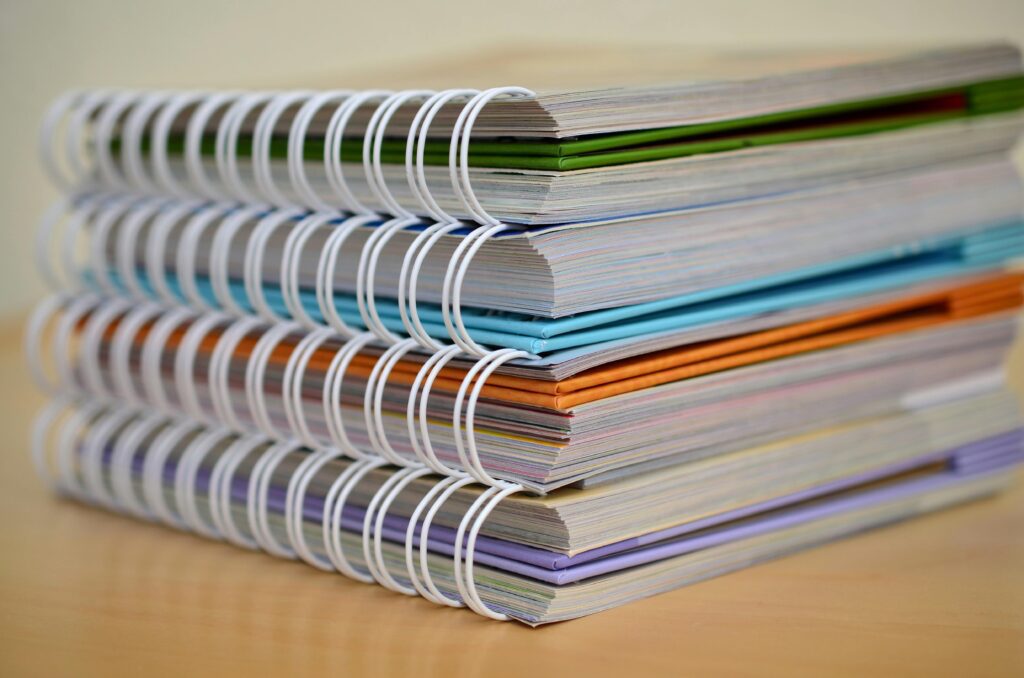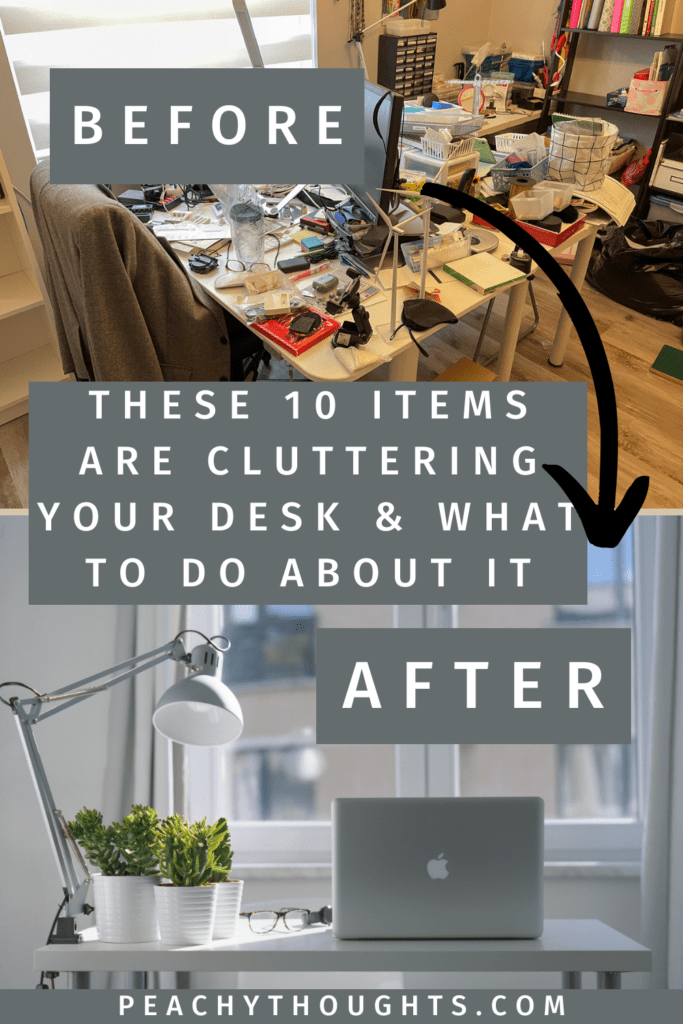
10 items cluttering your desk space and how to organise it!
This post may contain affiliate links, which means that I may receive a commission if you make a purchase using these links. As an Amazon Associate I earn from qualifying purchases.
Clutter and disorganization create costly problems that you cannot afford. Messy desk spaces
hinder productivity, wasting valuable time, money, and resources. Consider the impact of these
expenses:
- Americans collectively spend $2.7 billion annually replacing lost items.
- The average employee wastes at least 2 hours daily searching for documents.
- Unorganized work spaces cost businesses an estimated $2.5 million yearly and significantly reduce worker efficiency.
Think about the time wasted searching for items (I have spent a lifetime doing that) or replacing
lost supplies, like pens, staplers, and scissors (which might get me bankrupt one day).
So, I channeled my inner Marie Kondo and got some order to the chaos that my desk was in. Let
me shed some light on the unnecessary things that are blocking up your space. I know some
things may be difficult to part with, but you have to let go.
Supplies clutter
Look at your workstation for a moment. You notice pens, sticky notes, binder clips, and other
office items strewn all over the place. When clutter starts cluttering:

- You have not designated particular storage spaces for your standard supplies.
- You use something and then forget to put it back where it belongs.
- Things left on your desk by others.
Paper clutter
Are you growing a personal mountain of to-do lists growing at your office? Do you have
sporadic printouts of emails lying about your desk? Do coworkers leave documents on your desk
all day long? When does paper clutter accumulate?

- You publish papers that are not essential.
- There isn’t a designated “incoming” tray for documents.
- Documents are not quickly filed, labeled, or confined.
- There aren’t any readily available empty folders for filing.
- Before making a file, you want precisely printed file labels.
Under the desk clutter
Everyone has gone through it—me, too. I’ve been there, done that. When your desk becomes
cluttered, you quickly shove everything below with the intention of cleaning it up later. However,
“later” never arrives.

Priorities change, distractions appear, and before you realize it, those things have taken hold. It’s out of sight, out of mind until you trip over it or notice it, which puts pressure on your
body and mind each time you recall it exists!
Desk or file drawer clutter
Oh! The infamous rubbish drawer! Has anybody ever had one of these? I know I did. Often, in
our haste to straighten up, we toss junk into a cabinet or drawer for easy concealment. The
problem? Rarely do we come back to clean things later. Then the rummage starts when we need
anything from it.
Memory clutter
We are emotionally linked to our “memory” junk. Thus, getting rid of all the clutter we
accumulate is the hardest. It might be in the shape of funny presents, mementos from
conferences, or drawings your kid made.

Professional organizer Peter Walsh describes it as “the stuff you fear losing memory if you let
go.” People struggle most with clearing it in their workplace challenges. They treasure the family
portraits and sentimental pieces that personalize their workstations. However, many are taken
aback by the serenity that comes with decluttering!
Outdated technology
Like me, you may have old CDs and software disks stashed away in a file cabinet. However, if
you aren’t going to utilize them for years, why keep them? You can obviously discard that
Microsoft application from 2000 since most software requires yearly upgrades and renewals.

Mystery cords
It’s the box of mismatched cables stashed away in the dark recesses of your drawers. At my
workstation, I even have mysterious wires waiting for their turn to be explored. One of the best
ways to declutter workplaces and storage areas is to clear them out.
Broken hardware
Keyboards, PCs, laptops, and monitors may all fail over time. It’s better to get rid of these
pointless gadgets since keeping them around would probably clutter your workspace and storage
spaces. Electronics may be hazardous to dispose of in conventional garbage, so always choose
recycling over throwing them out.

Dead batteries
I am trying to recycle whatever they can, including batteries, as part of my green initiative. It’s
not appropriate to throw them in the garbage. However, keeping them in your desk drawer could
lead to mess and hassles. Alternatively, place a dead battery bucket at work and recycle it once a
month.
Unnecessary furniture
Although furniture is sometimes disregarded as clutter, its furnishings are the bulkiest objects in
an office! Making space for movement by getting rid of unnecessary furniture is beneficial.
Select space-saving furniture, such as tall bookcases or storage cabinets, that effectively uses
vertical space. To reduce visual clutter, choose items that complement the style and ambiance of
your workspace.
Tips to Organize Your Desk Space
After removing everything superfluous, it’setting up procedures for keeping your workplace
neat is important. Here are some pointers:
- Plan frequent cleaning sessions: Set aside time for cleaning and organizing once a week or once a month to ensure efficiency andkeep clutter under control.
- Create a procedure for receiving new paperwork: Set up a procedure for scanning, organizing, and storing papers such as emails, bills, and significant forms to facilitate easy handling and storage.
- Establish a productive filing system: Design a storage solution that works with your workflow so that you and your team can quickly retrieve information.
- Make sure everything has a place: To reduce clutter and facilitate retrieval, make sure all supplies and equipment have designated locations and are kept correctly when not in use.
- Assign specific workspaces: Set aside certain spaces for various jobs to keep things organized and promote focus.
- Make sensible storage container choices: Choose storage containers that complement your design and available areas for documents, supplies, and equipment that aren’t used every day.
- Adopt technology: Solutions such as print management software should be used to supervise and expedite printingprocesses to improve productivity and organization.
Best value for money organiser you can find here on Amazon.
Final Thoughts
Clutter isn’t just annoying—it affects our mental, physical, and emotional well-being and how
others view us. It hampers productivity and increases stress. But there’s hope! With organization
skills and determination, we can declutter our desks and create a peaceful workspace!






